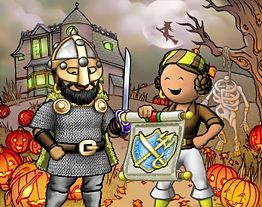The Narentines
| The Narentines at a Glance | |
|---|---|
| Cobalt Ocean | |
| Last Captain | Deadset |
| Senior Officer(s) | None |
| Politics | Autocratic |
| Shares | Jobber's Delight |
| Flag Affiliation | Dead In The Water |
| Founded | 25 February, 2010 |
| dormant as of 10 March, 2012 | |

| |
The Narentines is a dormant crew on the Cobalt Ocean.
About The Narentines
The Narentines were named by their land, Neretvia, which was named by its neighbouring river. Their secondary name, Pagans (and thus their land Pagania), the Romano-Byzantines gave them because they weren't Christianized in the time when most Serbs were. The Latin name Merania, meaning the Coastland, was also used - and it gave the name for its denizens: Marians. The Pagans fiercely opposed Christianity, seeing it as a means of oppression, and cherished the Slavic Paganism for long.
Next to sailing, the Marians were professed in trading, growing olives, figs and vineyards. On the outskirts of Biokovo and Mosor and on the islands, they herded cattle and they were also tilling the fields to an extent. In the later medieval ages, Merania imported wheat and exported wine, solted fish, dry fruits, etc.
Their best expertise and the main income of the Pagans was piracy. The loot was split traditionally just as the catch of fish - one half goes to the provider of the ships and/or the organizer of the hunt (Prince or Archont) and the other half is split amongst the crewmembers. They were especially notorious for their slave-trade. The main type of vessel the Narentines used was the Slavic Sagena (Latin: "Sagitta", meaning: "arrow") from the beginning of the 9th century, a variation of the Scandinavian Viking Drakkar. It was a long, relatively shallow vessel that was specific for its high speed with a slender body, a sharp bow and a mast. It was manned by 40 crewmembers that were at the same time professional fighters. Other than this type of vessel, the Pagans used the Kondura; a ship similar to the Sagena, but a lot smaller, with a crew of 20 members. The Marians also used other types of vessels and barges. The Marian rulers were called Morstiks and Judges, although the Church refers to them as Kings. The titles of the nobility were typical Slavic titles: Prince, Treasure-keeper, Chaplain, Knight.